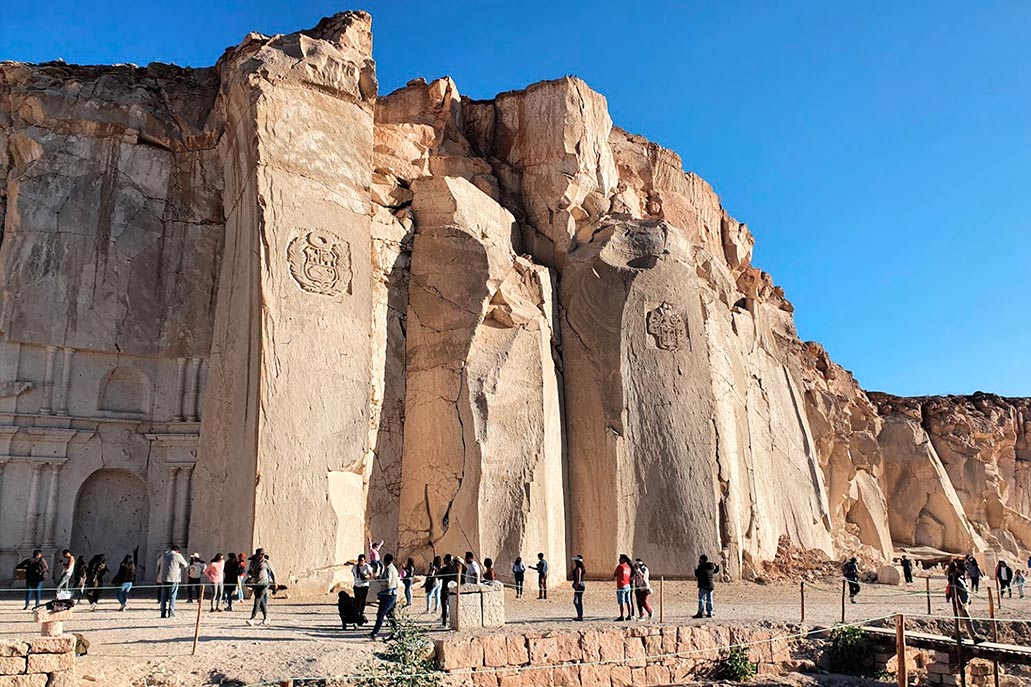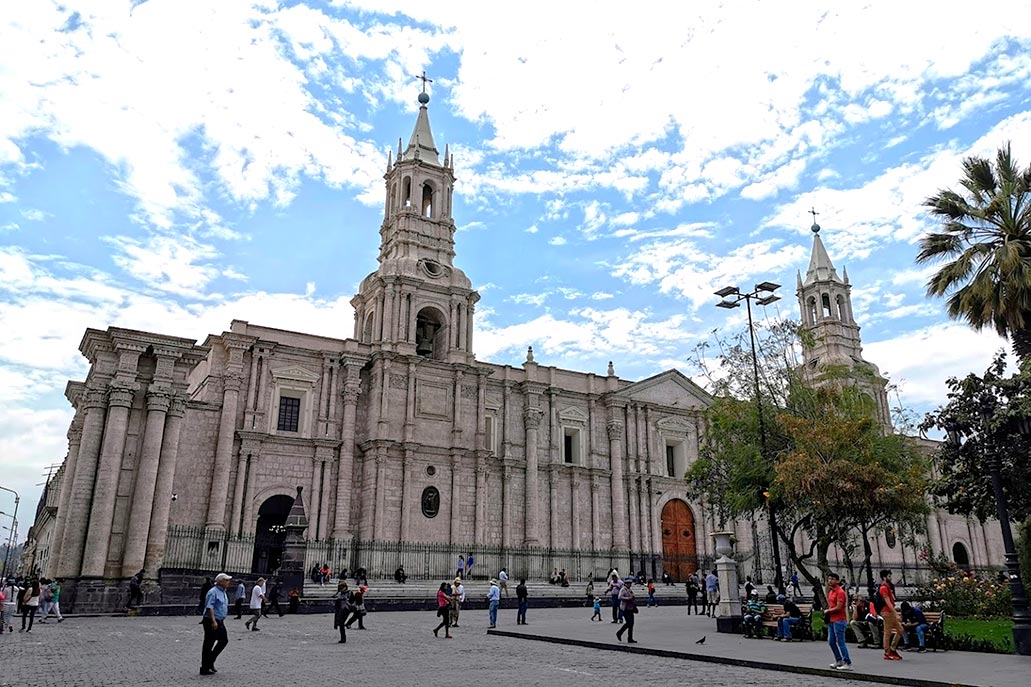Arequipa and the importance of ashlar for its constructions
After the Spanish arrival and dominance over the Inca empire, thanks to the timely support of chief curacas who did not hesitate to join forces against the Tawantinsuyo. A new form of construction was needed. Consolidating in this way a new culture within what would be the Peruvian territory. The main change that was seen was the founding of new cities. Within this project of new cities, Arequipa emerges, which cemented its history based on ashlar.
Content
1. Origin of Ashlar
The valley of the Chili River, being surrounded by volcanoes, is the right place for the formation of ignimbrite stone, better known as ashlar. The aforementioned can be used for multiple things with different finishes due to its plasticity. The volcanic origin of these stones began with ancient volcanic eruptions where the pyroclastic flow or known as a burning cloud descended in a large part of the valley.
It is believed that the greatest amount of volcanic flow settled in the Southwestern zone of the Chachani between the zones of Cerro Colorado, near the Chili river in Uchumayo. However, the main settlement of all this pyroclastic flow settled in what is now known as the Añashuayco ravines. Reason why until now it can be extracted and used as an ashlar quarry. For the stones to have formed as we see them, it is estimated that this volcanic eruption and the entire process narrated occurred more than 2 million years ago.
It is important to note that ashlar is a very compact, white igneous stone. However, in some compositions it is very porous, facilitating sculptural work. These stones have different shades of colors or variants. The one that was formed in Arequipa territory has a lighter tone, almost white. Product that in its composition contains quartz, plagioclase, along with calcium, sodium and aluminum compounds; in less presence. Finally, in Arequipa you can find other varieties of ashlar such as pink or salmon-colored and those with yellowish and grayish tones. The tone of its colors varies by the chemical composition by which they are composed.
The presence of ashlar demonstrates that many volcanic eruptions occurred in the past. It is estimated that these eruptions managed to spread over an area of 600 square kilometers.
2. History of the ashlar in Arequipa
Arequipa was founded in 1540 on August 15. With the rule of the Spanish crown, constructions similar in style to those of Andalusia or other cities in Spain were expected. However, the syncretism that occurred after the encounter of two totally different cultures, achieved a quite recognizable and impressive artistic expression, especially artistic and of great impact we are talking about the Andean baroque or mestizo baroque.
For some specialists, the merit of Arequipa architecture is due to the fact that it does not aggressively alter the natural landscape. The white walls, products of ashlar, contrast with the blue sky and in some areas with the green Arequipa countryside. In any of its buildings we can find a great variety of forms and expressions. Expressions that were consecrated after an arduous process of adaptability and the courage to show the Andean worldview in such important works and surely regulated by the evangelizers.
Years before the foundation of Arequipa. It is estimated that the ancient settlers settled their homes in the vicinity of the Chili River. They used ashlar for such purposes, even the first constructions after the founding of the city were based on this stone. However, after the 1582 earthquake that destroyed those first houses along with those built after the foundation, an urban project began. With this, a reorganization was achieved and at the same time a new way was used to build the next buildings where the main buildings had to be entirely made of ashlar. The main factor for the use of ashlar was that they could not make their traditional masonry materials correctly, so they had to adapt to the use of ashlar.
The first construction of great value, with this material was the Church of the Company of Jesus, whose construction covered the years 1595 to 1698. Due to the abundant and interesting manufacture of this stone, future constructions took a unique course.
The first construction of great value, with this material, was the Church of the Company of Jesus, whose construction spanned the years 1595 to 1698. Due to the abundant and interesting manufacture of this stone , future constructions took a unique course.
3. About constructions in ashlar
As we mentioned, ashlar is not an entirely solid rock. However, it is quite excellent as a construction material, especially for areas that are not as humid or cold as Arequipa. The temperate climate is ideal so that the ashlar does not lose its consistency. In addition, these stones are quite easy to join using mortar and mortar. Something that the first builders kept in mind is that some varieties of ashlar have a higher density than others. The first were used for lintels or covers. While the most porous or less dense, they were used for roofing or the construction of vaults, foundations and walls.
The ashlar served as the exclusive stone for carving the characteristic figures of the Cusco school, where the Andean or mestizo baroque reached its maximum expressiveness. For this reason it is normal to find, in some columns or ornamental pieces, an exclusivity of carving, with iconographic figures that represent mermaids, pumas, the moon, the sun, lions, plants such as papayas, rosettes, quatrefoils and other representations that represent the worldview. andean. Examples of these carvings can be found in the carved arches of the cloister of the Society of Jesus in some other temples and in the construction called the Casa de Moral, which is a jewel of ashlar-based constructions.
Ashlar also used for civil construction. This can be evidenced today, when traversing traditional neighborhoods. These constructions initially had a roof made of ceramic tiles, but due to the constant earthquakes, some of these constructions had to be refurbished, opting for domes, thus avoiding rain and better supporting telluric movements. The only problem that could be seen, according to some historians, was that the houses also looked like temples. An example of this is that you can see similar finishes between the streets of the Santa Catalina Convent and the traditional streets of Yanahuara and Cayma.
Later on, ashlars continued to be used to build houses, but they were simpler than before. The ashlar began to be used in a combined way or as purely aesthetic details for the facades. The first ashlar walls occupied too much space of up to almost a meter. The need to obtain a house with more space reduced constructions based on ashlar. The first neighborhoods of Arequipa or traditional neighborhoods were built with ashlar and today you can visit them, the most popular are the Yanahuara neighborhood and its square where the arches and the viewpoint are located, another neighborhood is San Lázaro and Vallecito
These buildings, together with the large number of temples and other constructions, helped Arequipa to be called the “white city”. Although the constructions with this material stopped many years ago, it is important to point out the merit it had and at the same time that it continues to be a tourist attraction due to the different sculptures that can be found in the Añashuayco ravine, a place that houses the route of ashlar.
4. Some important ashlar buildings in Arequipa
Edification | Opening | Restoration |
|---|---|---|
| Arequipa Cathedral | 1656 | 1868 and 2002 |
| Compañía Temple | 1698 | 1870(?) |
| San Agustin Temple | 1574 | 1868 |
| Santo Domingo Temple | 1647 | 1960 |
| San Francisco and the third order | 1563 | Remodeled in 1687 |
| Temple of La Merced | 1661 | — |
| Santa Teresa Monastery | 1747 | — |
| Cayma Church | 1719 | 1802 (Add side naves) |
| Church of Yanahuara | 1750 | — |
| Chiguata Church | Does not specify (XVIII) | — |
| The huasacaque farm | Does not specify (XVII) | — |
By Machupicchu Terra – Last updated, August 28, 2023


